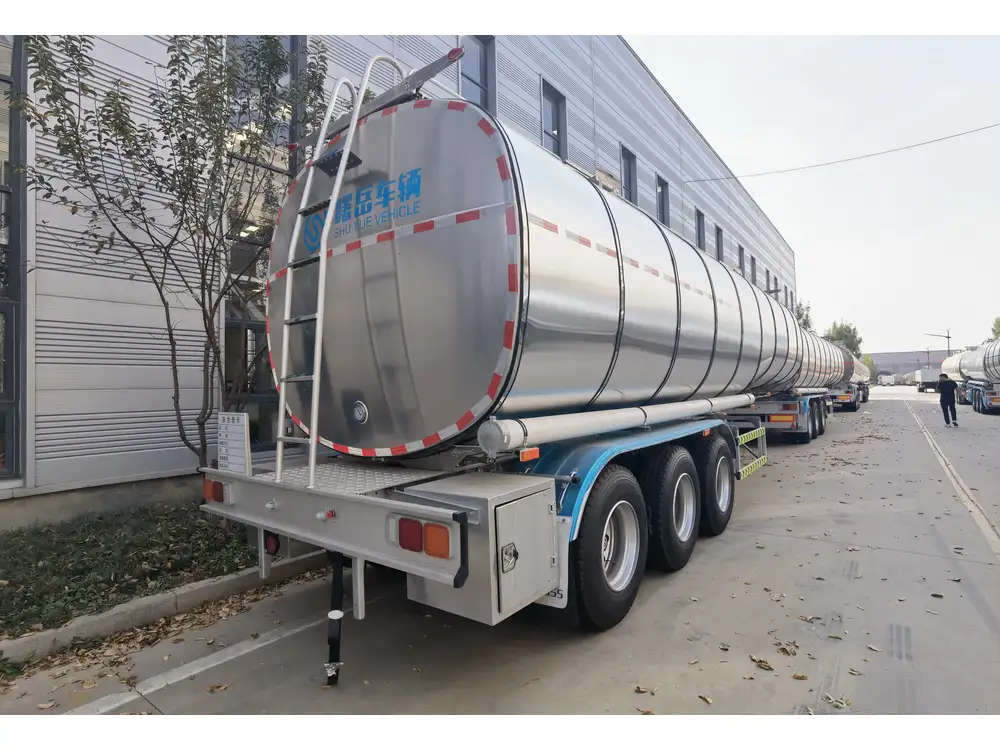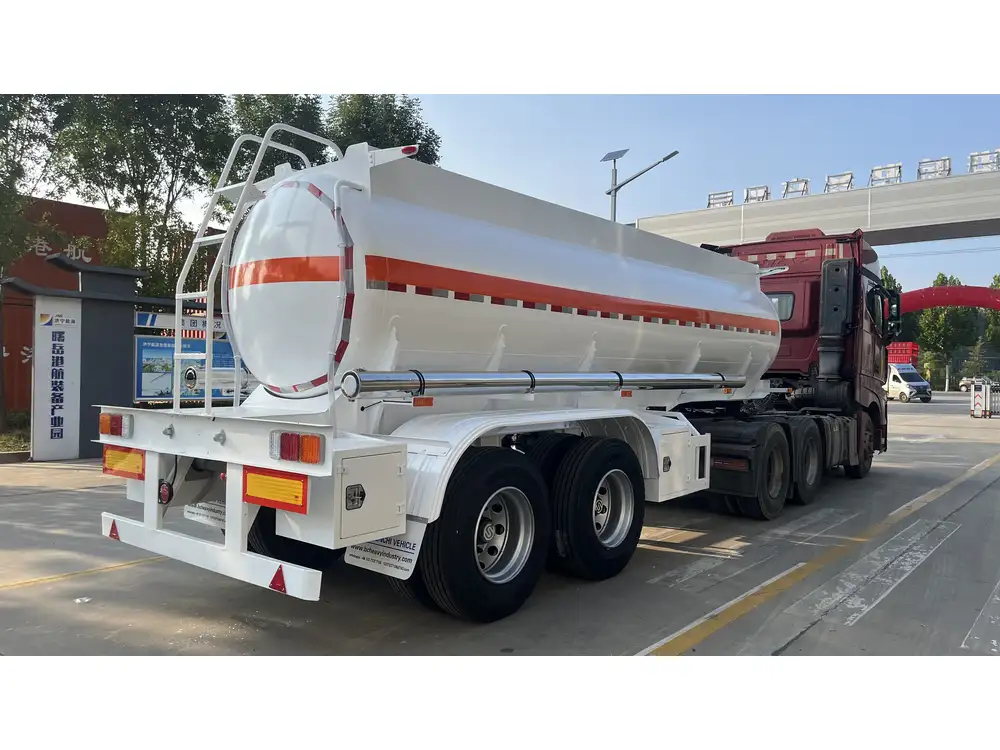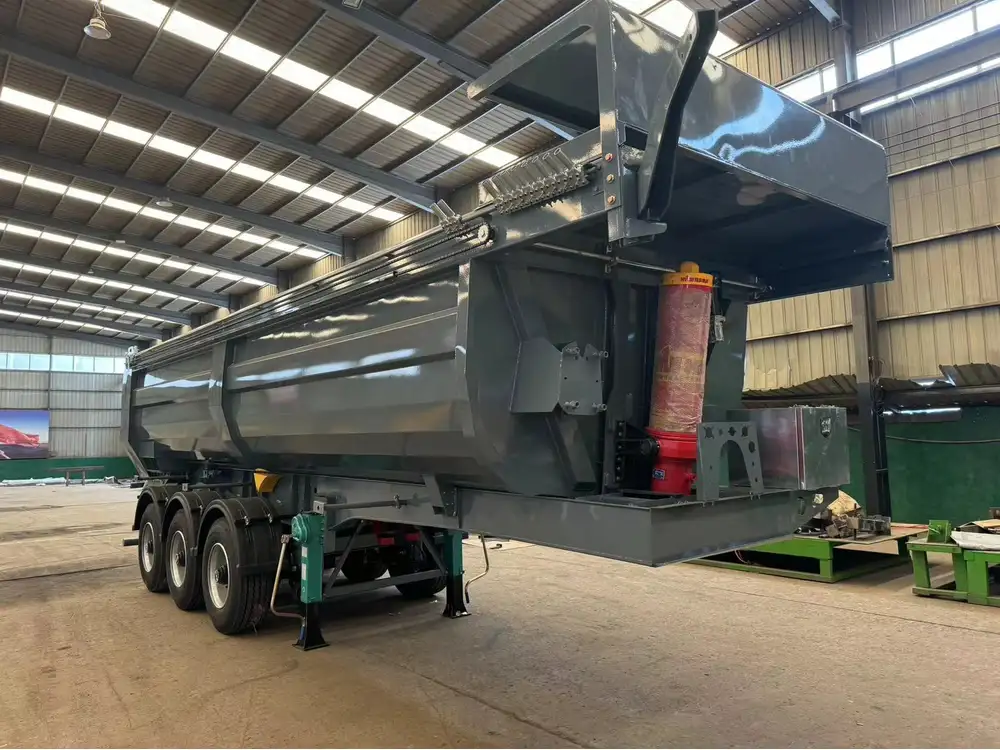When navigating the complexities of logistics and transportation, it is essential to consider the operational costs inherently tied to fuel consumption, especially in the context of semi-trailers. The burning question that often surfaces is, how much diesel does an empty semi-trailer consume?
The Basics of Diesel Consumption in Semi-Trailers
1. Factors Influencing Diesel Consumption
Determining the diesel consumption of an empty semi-trailer involves several factors, primarily:
- Weight of the Trailer: While empty, semi-trailers still have a considerable inherent weight, affecting fuel efficiency.
- Design and Aerodynamics: The shape of the trailer can significantly influence air resistance.
- Tire Specifications: The type and pressure of tires can alter the rolling resistance and, consequently, fuel efficiency.
- Engine Specifications: The power and efficiency of the truck’s engine play a critical role in overall diesel consumption.

2. Standardized Fuel Consumption Rates
While every semi-trailer will have different specifications and costs associated with fuel, on average, an empty semi-trailer will consume between 4 to 7 miles per gallon (MPG) of diesel. This could vary based on the aforementioned factors, along with real-world conditions such as:
| Factor | Impact on Fuel Consumption |
|---|---|
| Road Conditions | Poor surfaces can increase drag |
| Driving Behavior | Aggressive acceleration worsens MPG |
| Weather Conditions | Wind and rain can increase resistance |
3. Understanding Operational Costs
To quantify the fuel expenses, let’s calculate the diesel consumption under typical scenarios:
- Distance Traveled: Assume an average distance of 200 miles driven by an empty semi-trailer.
Using the average fuel efficiency rates:
- 4 MPG: Consumes ( \frac{200}{4} = 50 ) gallons
- 7 MPG: Consumes ( \frac{200}{7} \approx 28.57 ) gallons
Next, with diesel prices fluctuating around $4.00 per gallon, we can break down the operational costs:
| MPG | Total Fuel Consumption | Total Fuel Cost |
|---|---|---|
| 4 | 50 gallons | $200 |
| 7 | 28.57 gallons | $114.28 |
Thus, the fuel cost for operating an empty semi-trailer over 200 miles can range from $114.28 to $200, depending on the fuel efficiency metrics achieved.
Comparison with Loaded Semi-Trailers

4. Fuel Consumption When Loaded
It is crucial to understand how fuel consumption changes when a semi-trailer is loaded. When loaded, a semi-trailer typically consumes between 6 to 8 MPG. The increased weight requires significantly more fuel, influencing logistics decisions and operational efficiency.
For a loaded scenario, calculate similarly for the same 200 miles:
| MPG | Total Fuel Consumption | Total Fuel Cost |
|---|---|---|
| 6 | ( \frac{200}{6} \approx 33.33 ) gallons | $133.33 |
| 8 | ( \frac{200}{8} = 25 ) gallons | $100 |
5. The Cost-Benefit Analysis
When contrasting the empty versus loaded operation, we see stark differences:
- Empty Trip (4 MPG): $200 over 200 miles
- Loaded Trip (6 MPG): $133.33 over 200 miles
This analysis shows that not only is the cost of an empty trip higher, but it stresses the importance of optimizing payload management in logistics.
Addressing Common Concerns

6. Impact of Idling
In logistics, drivers sometimes need to idle the truck, believing it won’t consume much diesel. However, idling increases fuel consumption significantly, often wasting up to 1 gallon per hour. Over a long day of waiting, this can cut into profit margins.
7. Fuel-saving Strategies for Fleet Management
Companies must actively reduce diesel costs through various methodologies:
- Maintain Tires: Regularly check and maintain appropriate tire pressure to reduce rolling resistance.
- Optimize Routes: Use advanced routing software to minimize travel distances and avoid congested areas.
- Routine Maintenance: Ensure that the engine and other critical systems are regularly serviced for optimum efficiency.
Future Considerations

8. Emerging Technologies in Semi-Trailer Designs
The transportation industry constantly evolves, leading to innovations aimed at maximizing efficiency:
- Aerodynamic Designs: Newer models produce less drag, improving fuel efficiency.
- Hybrid and Electric Technologies: Exploring alternative fuels, including electric options, could revolutionize costs associated with diesel consumption.
9. Regulatory Factors
Governmental regulations aimed at improving fuel efficiency have impacted semi-trailer designs. Understanding these regulations is crucial for staying compliant while optimizing fuel consumption effectively.
Conclusion
The dynamics of diesel consumption by empty semi-trailers highlight critical factors that professionals in the transport industry need to prioritize. With an average consumption range of 4 to 7 MPG, operational costs can vary widely and significantly impact overall logistics expenses.
By understanding and managing the elements affecting fuel consumption, applying smart operational practices, and staying abreast of technological advancements, companies can enhance their profitability while navigating the complexities of modern-day logistics. As the industry moves towards more sustainable methods, keeping an eye on these variables will remain pivotal in optimizing performance over time.
Actionable Takeaway: Make use of this comprehensive guide to evaluate your fleet and effectively strategize your logistics operations. Embrace change and seek efficiencies to ensure that your operation remains competitive in this ever-evolving landscape.



